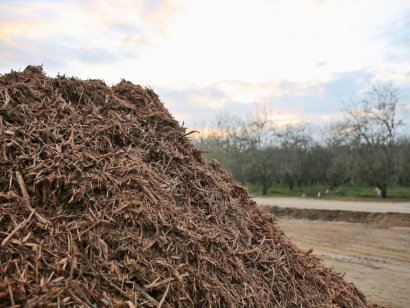
“As the world’s first carbon removal project converting biomass to hydrogen, we are addressing the ever-growing demand for renewable hydrogen with a carbon-negative approach,” says co-founder and CEO Mac Kennedy. “Our pioneered technology directly supports California in its carbon-neutrality goals by removing carbon dioxide from the atmosphere with our wood waste conversion process. With this new facility, Mote is laying the groundwork for affordable hydrogen offerings on a global scale while also supercharging natural carbon removal processes.”
Mote’s proprietary integration of proven equipment in a novel process establishes this ground-breaking carbon removal and clean energy generation facility. Mote utilizes wood waste from farms, forestry, and other resources where it would otherwise be open-air burned for disposal, left to decompose, or sent to a landfill. Through gasification and subsequent treatment processes, the remaining carbon dioxide is extracted and permanently placed deep underground for ecologically safe storage.
Mote is also in discussions with carbon utilization company CarbonCure Technologies on the potential of permanently storing its CO2 in concrete via CarbonCure’s carbon removal technologies, deployed in hundreds of CO2 mineralization systems at concrete plants worldwide. Through this biomass-to-hydrogen process, Mote contributes to reversing climate change through the functional removal of carbon from the air and putting it deep underground or permanently storing it in concrete at construction sites.
“CarbonCure applauds Mote as it enters the market with its innovative hydrogen production process. Curbing climate change requires creative, complementary solutions to scale up carbon removal rapidly,” CarbonCure Chair and CEO Robert Niven said. “We look forward to ongoing collaboration.”
As head of the carbon capture program at Lawrence Livermore National Laboratory (LLNL), Dr. Joshuah Stolaroff co-authored the award-winning report, Getting to Neutral: Options for Negative Carbon Emissions in California, which lays out the value of biomass-to-hydrogen and addresses practices and technologies for removing CO2 from the air, providing clear evidence that carbon neutrality in California is possible by 2045.
“After spending the last 20 years researching carbon capture and clean energy, it's amazing to have a solution that can address both and even divert waste to a beneficial use,” said Dr. Stolaroff, Chief Technology Officer of Mote.
“This is exactly the kind of project we need to meet our climate goals at a reasonable cost,” said Roger Aines, Chief Scientist of the Energy Program at LLNL. “Mote understands the energy system, and they are making a smart play for long-term impact.”
Located near Bakersfield, the Mote facility aims to assist California in recycling the 54 million metric tons of wood waste generated annually. The focus on carbon removal and storage sets Mote’s technology apart from other clean hydrogen projects as Mote’s product delivers hydrogen with a producer sale price and carbon intensity score significantly lower than its competitors.
Mote is joined by Fluor Corporation and SunGas Renewables, Inc. to develop its new plant. The engineering firm Fluor will support the integration of proven equipment into the facility. In addition, SunGas Renewables ("SunGas"), a subsidiary of GTI International (GTII), has entered into an Engineering Services Agreement with Mote to provide its gasification systems to the Mote California Central Valley Project.
“Fluor is excited to support Mote in establishing a successful project delivery strategy through early-stage design development,” said Nicole Davies, Vice President, Business Development & Strategy, Energy Solutions. “Mote is positioned to introduce wood-waste-derived green hydrogen to consumers leveraging the latest advancements in equipment and technology. With Energy Transition as a principal focus, we are pleased to join this team.”
“Mote is in a strong position to deploy the first carbon-negative biomass-to-hydrogen gasification project, and we are happy to support them,” said Robert Rigdon, CEO of SunGas Renewables.
While the components for Mote’s process exist and have been commercially operating in various industries, Mote has integrated them to maximize energy efficiency and scalability to achieve carbon reduction at a lower cost than current models of carbon removal.
"Carbon removal and clean hydrogen are booming markets right now. Mote is extraordinarily positioned to scale quickly for huge impact,” said Andy Bonsall, Managing Partner at Counteract, an investor in Mote.
Earlier this year, Mote was selected for the inaugural class of Rice University's Clean Energy Accelerator. They closed a seed round this fall with support from Preston-Werner Ventures, Counteract, and investor Joffre Baker.
PHOTO: Located near Bakersfield, Calif., the Mote Hydrogen facility will be the world’s first carbon removal plant converting wood and agricultural biomass waste into green hydrogen. (Photo: Business Wire)

